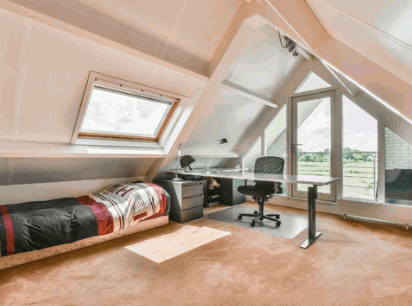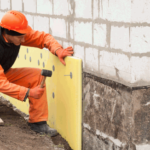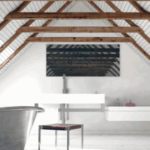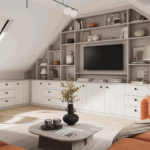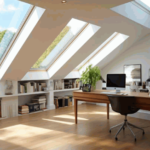Are you considering a shell loft conversion but unsure about what it entails, including the need for planning permission and building regulations, as well as its potential benefits?
This guide unpacks everything you need to know, from the basics of what a shell loft conversion is to the various advantages it offers, such as increased living space, enhanced property value, and a better understanding of conversion costs.
It also explores factors affecting costs, average price ranges, additional expenses, conversion timeline, and tips to save money on your project.
Read on to discover how a shell loft conversion can transform your home and enhance your living space.
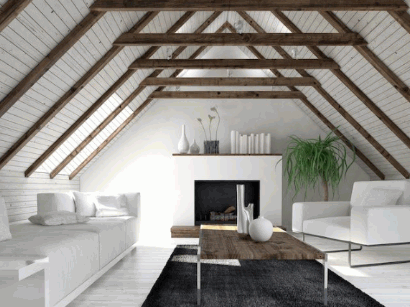
What Is A Shell Loft Conversion?
A shell loft conversion is a structural project that transforms an underutilized loft space into a functional area, usually involving significant modifications to the roof structure to create usable living space. This type of loft conversion typically includes the basic construction work, such as roofing, structural work, and framing, but requires further interior finishes to make it fully habitable. In the UK, various types of shell loft conversions, such as dormer, hip-to-gable, mansard, and bungalow loft conversions, can be undertaken, depending on the property type and planning regulations, which must be adhered to for legal compliance.
Find out more: Can Any House Have A Loft Conversion
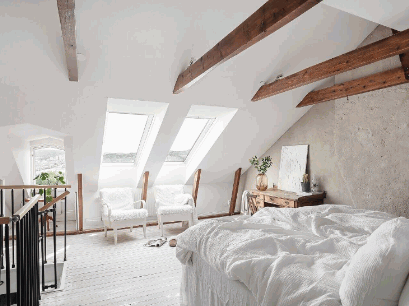
What Are The Benefits Of A Shell Loft Conversion?
Shell loft conversions offer multiple advantages for homeowners seeking to maximize their loft space, ranging from increased living areas to enhanced property value. These conversions provide a cost-effective solution compared to traditional home extensions, allowing for the creation of bespoke designs tailored to individual needs and preferences. Furthermore, a shell loft conversion can substantially increase the usable square footage of a home, making it an attractive option for those looking to expand their living arrangements without the extensive costs and complexities associated with more traditional construction projects.
Increased Living Space
One of the primary benefits of a shell loft conversion is the substantial increase in living space that it provides, allowing homeowners to utilize previously wasted loft areas for various purposes. This added space can be transformed into additional bedrooms, offices, or recreational areas, effectively enhancing the functionality of the home without the need for extensive ground-level renovations. With careful design planning and consideration for insulation heating and electrical plumbing, a shell loft conversion not only maximizes the existing footprint of the property but also ensures that the additional square footage is both usable and aesthetically pleasing.
By thinking outside the box, homeowners can envision this newfound area as a versatile space tailored to their unique needs and lifestyles, whether through a DIY loft project or by hiring tradesmen for a professional finish. Whether it’s creating a cozy guest bedroom for visitors, establishing a productive home office that fosters creativity, or even designing a vibrant playroom for children, the possibilities are abundant.
- Maximizing natural light through strategic window placements, such as Velux windows, enhances the comfort and ambiance of each designated space.
- Incorporating clever storage solutions can help maintain organization without sacrificing style, allowing homeowners to effectively use their loft space.
- Flexible furniture arrangement further optimizes usability, accommodating various activities throughout the day and enhancing the allure of a loft renovation.
Proper design planning not only caters to personal taste but also integrates practical features that ensure the new living area complements the overall home aesthetic, ultimately maximizing its full potential.
Adds Value To Your Property
Investing in a shell loft conversion can significantly add value to your property, making it an appealing option for homeowners looking to enhance their asset’s worth while considering architect fees and building control requirements. By increasing the overall square footage and usable living space, potential buyers are likely to be attracted to a home that boasts a well-executed loft conversion, contributing to higher property value. The return on investment for loft conversions is often higher than that of traditional home extensions due to their efficiency and the growing demand for residential properties that feature adaptable living spaces, such as those with a well-planned shell conversion.
The appeal of loft conversions is further supported by data, which indicates that homeowners may see an increase in property value by up to 20% after the renovation. This trend reflects a broader shift in the residential market, where adaptable spaces are increasingly favored.
In terms of cost, shell loft conversions generally range from $35,000 to $160,000, which is often less than traditional extensions that can exceed $120,000. This cost-effectiveness, along with the potential for a contingency fund for unexpected expenses, makes it an attractive choice for many homeowners.
- Space Utilization: Loft conversions maximize existing space.
- Flexibility: The potential for multiple uses—offices, guest rooms, or play areas.
- Market Demand: Increasing desire for unique and functional living areas.
These factors contribute not only to improved property value but also to a wise investment in a rapidly evolving market.
Cost-effective Option
A shell loft conversion represents a cost-effective option for homeowners looking to increase living space without incurring the higher expenses associated with new builds or extensive ground-level extensions. The conversion is typically more affordable than traditional renovations, allowing for better allocation of budget towards essential structural work, including roofing and insulation. This financial efficiency not only makes shell loft conversions appealing but also opens doors for homeowners to invest in other areas of their property, ensuring a well-rounded approach to home improvement.
Consider, for example, the significantly shorter construction time required for a shell loft conversion, which typically takes only a few weeks compared to several months for larger projects. This not only reduces labor costs but also minimizes the disruption to daily life.
Homeowners can explore budget-friendly options such as using pre-fabricated materials that lower overall expenses while maintaining quality.
- Roofing can be streamlined with standard materials.
- Insulation can be effectively sourced from local suppliers.
- Simple, open layout designs often reduce costs further.
By prioritizing these choices, one can ensure that a well-designed shell loft conversion achieves the desired living space without ballooning the budget.
Customizable Design
The customizable design aspect of shell loft conversions allows homeowners to create spaces tailored to their unique needs and preferences, making this option particularly appealing. From choosing the layout to selecting interior finishes, homeowners can collaborate with architects and designers to ensure that their new loft space is not only functional but also aesthetically pleasing. This level of personalization enables individuals to make the most of their loft space while reflecting their personal style and enhancing the overall ambiance of their home.
One of the most exciting features of shell loft conversions is the flexibility in layout options. Homeowners can decide how to section off different areas, such as a cozy reading nook or a home office, to best suit their lifestyle. Additionally, interior finishes play a crucial role in achieving that perfect look. From selecting wall colors and flooring options to choosing lighting fixtures and furniture styles, each decision contributes to the overall atmosphere.
For instance, take a look at a recent project where a family transformed their loft into a chic guest suite with modern amenities and warm touches, including a loft ladder and escape window for safety, significantly increasing their home’s functionality and aesthetic appeal. Such projects exemplify how thoughtful design choices can significantly enhance:
- Homeowner satisfaction
- Space utilization
- Aesthetic value
by reflecting individual tastes and practical requirements.
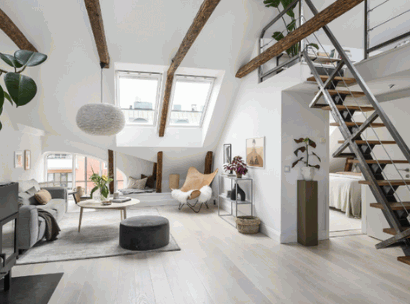
What Factors Affect The Cost Of A Shell Loft Conversion?
The cost of a shell loft conversion can vary widely based on several critical cost factors, making it essential for homeowners to understand how these elements influence their overall budget. Key aspects that contribute to conversion costs include the size and type of the loft, the complexity of the project, required building regulations, and any necessary structural modifications. Additionally, project management and the qualifications of tradespeople involved in the conversion, as well as ensuring compliance with building regulations, can further affect financial considerations, making upfront planning and detailed budgeting crucial for success.
Size And Type Of Loft
The size and type of the loft play a significant role in determining the overall cost of a shell loft conversion, as larger spaces typically require more materials and labor to convert successfully. Different types of lofts, including dormer, hip-to-gable, and mansard, also vary in complexity and expenses associated with structural modifications and design requirements. Homeowners must consider these factors while budgeting for their conversion project, as the type of loft they possess will ultimately influence both the scope of work and the associated costs.
To begin with, dormer conversions, along with Velux conversions, are often seen as one of the more straightforward options, primarily due to their relatively simple structure. Typical costs for a dormer conversion can range from $35,000 to $70,000, depending on the specific design and the size of the space.
In contrast, a hip-to-gable conversion or a mansard loft conversion modifies the existing roof shape, which can add to the complexity and cost. This type typically runs between $50,000 and $90,000. A mansard conversion, which involves reconstructing the roof space into a flat-top design, is the most expensive option due to its significant structural changes and usually costs between $80,000 and $125,000.
- Dormer Conversion: $35,000 – $70,000
- Hip-to-Gable Conversion: $50,000 – $90,000
- Mansard Conversion: $80,000 – $125,000
By understanding these financial implications, homeowners can make informed decisions about their loft conversion projects and choose the option that best fits their budget and needs.
Type Of Roof
The type of roof is a crucial factor that affects the cost of a shell loft conversion, as certain roofing styles may necessitate more extensive structural modifications and repairs. For instance, roofs that are flat or have complex angles may require specialized roofing solutions that can elevate conversion costs. Homeowners should consider their roof type when planning their conversion, as it directly influences the materials needed and the labor intensity of the project.
When examining roof types, it becomes evident that the shape and structure significantly dictate the overall expenses involved in a loft conversion. For example:
- Flat Roofs: While they are often more economical initially, flat roofs may require additional waterproofing and drainage systems, contributing to higher long-term costs.
- Pitched Roofs: These typically allow for effective drainage but might necessitate more extensive modifications such as reinforcement of the existing structure due to increased weight from roofing materials.
Ultimately, each roofing style comes with its own set of challenges and costs, which should be carefully analyzed by homeowners to make informed decisions about their conversion projects.
Complexity Of The Project
The complexity of a shell loft conversion project can greatly influence its overall costs, as more intricate designs and structural modifications typically require additional resources and expertise. Projects requiring extensive alterations, such as adding skylights or escape windows, may incur higher labor costs and material expenses. Homeowners must take into account the project’s complexity when developing their budget, as these factors can significantly impact the timeline and overall financial commitment.
When considering a shell loft conversion, it’s essential to understand that specific features like electrical and plumbing installations can further complicate the process.
- Electrical rewiring to accommodate new lighting may demand specialist labor.
- Plumbing adjustments for ensuite bathrooms can introduce additional hurdles.
Project management becomes crucial in overseeing these complexities, ensuring that timelines are adhered to and that work is done efficiently.
By having an experienced project manager, homeowners can navigate the intricacies of shell loft conversions more effectively, ultimately leading to a smoother process and potentially lower costs.
Location Of The Property
The location of a property is another vital factor that impacts the cost of a shell loft conversion, as urban areas tend to have higher labor costs and stricter building regulations.
In the UK, for example, residential properties in London often face additional expenses due to demand and higher living costs.
Homeowners should consider their property’s location when budgeting for a conversion, as this can significantly affect overall project expenses and timelines.
For instance, while London may see conversion costs ranging from $50,000 to $90,000 due to its bustling market and regulatory requirements, a similar loft conversion in a rural area might only cost between $35,000 and $60,000.
These discrepancies arise from factors such as the availability of skilled labor, material transportation costs, and geographic demand. In metropolitan settings, high demand elevates not just prices, but also the frequency of regulatory oversight that leads to potential delays.
- Urban areas like Manchester or Birmingham may lie somewhere in the middle, presenting moderate costs.
- In contrast, locations like Cornwall could offer more budget-friendly options.
Ultimately, understanding how geography affects loft conversion expenses can help homeowners make informed decisions and avoid unexpected financial pitfalls, ensuring they get the most value from their investment.
Considering all these aspects is crucial, as even small variations in location can lead to significant fluctuations in conversion costs.
Required Building Regulations
Required building regulations play a crucial role in the overall cost of a shell loft conversion, as homeowners must comply with local laws to ensure safety and structural integrity. This often involves obtaining planning permission and adhering to guidelines set by a building control surveyor, which can add both time and expense to the project. Understanding these requirements upfront can help homeowners budget more effectively and avoid potential delays during the conversion process.
Engaging with building regulations goes beyond mere compliance; it ensures that the finished loft is both safe and functional. Homeowners must consider:
- Planning Permission: Before commencing work, it’s essential to check if planning permission is needed. Some projects might qualify as permitted developments but still require notification to the local council.
- Building Control Inspections: Throughout the construction phase, inspections by building control surveyors will occur at various stages to confirm adherence to safety and structural standards.
- Cost Implications: Costs associated with these regulations can vary significantly. Not only do fees for planning applications and inspections add up, but any modifications required to meet local codes can also escalate expenses.
- Timeline Factors: Every additional requirement or inspection can stretch the timeline of the conversion project, which can lead to further complications if not managed properly.
Thus, a thorough understanding and planning for these regulations can significantly influence both the budget and schedule of a shell loft conversion.
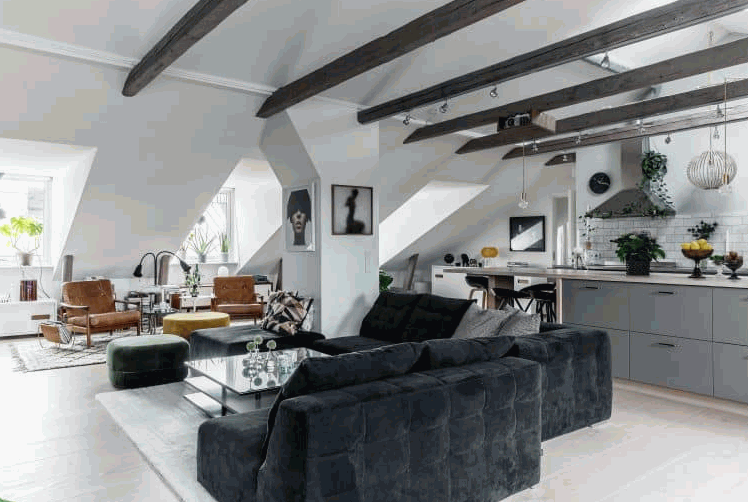
What Is The Average Cost Of A Shell Loft Conversion?
The average cost of a shell loft conversion can vary significantly based on numerous factors, including the type of conversion, the complexity of the project, and the location of the property. Generally, homeowners can expect to pay anywhere from $35,000 to $90,000 for a basic shell conversion, with standard projects costing between $50,000 and $125,000 and deluxe conversions potentially exceeding $125,000. Understanding the average costs associated with different types of shell loft conversions is essential for effective budgeting and planning.
Basic Shell Conversion
A basic shell conversion typically starts at around $35,000, providing homeowners with the fundamental structure needed to transform their loft space into a usable area.
This cost generally covers the essential structural work, such as framing, roofing, and ensuring the loft is watertight, but does not include interior finishes or detailed design elements. Key components may involve:
- Structural Reinforcements
- Insulation Upgrades
- Waterproofing Measures
While this option is budget-friendly, homeowners should be prepared to allocate additional funds for finishing touches and utility installations later on. It’s essential to remember that costs can quickly add up when considering things like plumbing, electrical work, and interior design.
Therefore, creating a comprehensive budget plan that accounts for both initial and ongoing expenses is crucial for a successful loft transformation.
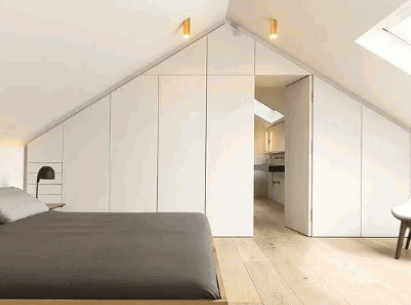
Standard Shell Conversion
A standard shell conversion typically falls within the range of $50,000 to $125,000, offering a more comprehensive solution for homeowners looking to optimize their loft space. This price range usually includes more advanced structural work and potentially some preliminary interior finishes, allowing for a quicker transition to a functional living area. Homeowners should be aware that while this option provides added value, it still requires careful budgeting for complete interior design and finishing.
To understand what makes a standard shell conversion unique, it’s essential to know what elements are typically included. This process often involves significant structural enhancements, such as reinforcing beams, installing new flooring, and creating secure access points like staircases. In contrast, a basic conversion may only cover minimal necessities.
- For example, structural work in a standard conversion often entails extensive inspections and necessary certifications.
- Interior finishes might range from insulation to the initial installation of plumbing and electrical systems.
Investing in a comprehensive shell conversion not only results in a seamless transition but enhances the property’s marketability and livability, serving as a wise long-term decision for homeowners.
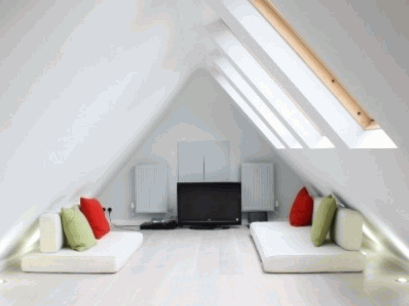
Deluxe Shell Conversion
A deluxe shell conversion can cost upwards of $125,000, providing homeowners with a high-end option that includes extensive structural modifications and premium interior finishes. This investment often reflects the homeowner’s desire for a bespoke design that caters to specific lifestyle needs, integrating luxurious amenities and advanced technical installations. While more costly, this option can significantly enhance both the aesthetic appeal and functionality of the loft space, making it a worthy consideration for those looking to maximize their property value.
When deciding between a deluxe conversion and more basic alternatives, several key factors come into play.
- Structural Complexity: Deluxe conversions require intricate planning and engineering which involves more extensive changes to the property’s framework.
- Premium Materials: The use of high-quality materials such as hardwood flooring, custom cabinetry, and state-of-the-art fixtures ensures durability and elegance.
- Customized Design: This type of conversion allows for personalized layouts and unique features tailored precisely to the homeowner’s lifestyle preferences.
Investing in a deluxe shell not only elevates the property’s appeal but also offers an impressive return on investment, ensuring that the initial outlay translates into long-term value and satisfaction.
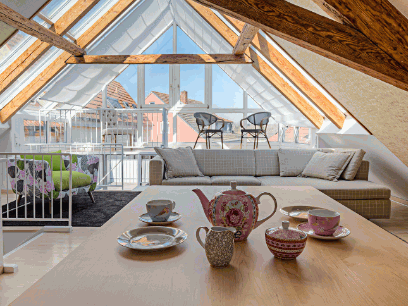
What Are The Additional Costs Of A Shell Loft Conversion, Including Value Added Tax?
When considering a shell loft conversion, homeowners must also account for additional costs that can arise throughout the project, which may impact the overall budget. Common additional expenses include fees for planning permission, compliance with building regulations, and costs associated with professional services such as architect fees or project management. Furthermore, interior finishing and any structural changes necessary to meet safety and design standards can significantly influence the final price of the conversion.
Planning Permission
Obtaining planning permission is a critical step in the shell loft conversion process, as it ensures that the project complies with local regulations and standards. Homeowners must submit detailed plans to their local planning office, providing necessary documentation related to building regulations and zoning laws.
This process often necessitates the inclusion of architectural drawings, structural calculations, and various forms of completed applications to avoid delays.
- Planning fee: Depending on the location and complexity of the conversion, fees may range significantly.
- Consultation: Engaging with local councils can provide insights into specific requirements.
While navigating the application can be daunting, understanding the importance of adhering to building regulations is vital, as non-compliance can lead to costly alterations, fines, and extended project timelines, impacting overall costs and homeowner satisfaction.
Building Regulations
Building regulations are essential for ensuring that a shell loft conversion adheres to safety and structural integrity guidelines, which ultimately protect homeowners and their properties.
These regulations serve as a framework that governs various aspects of construction, helping to mitigate risks associated with fire, electrical safety, and structural stability. By following these mandated guidelines, homeowners can avoid potential hazards that might arise from substandard construction practices.
Adhering to building regulations not only enhances the value of the property but also ensures that the final product is conducive to safe living conditions. Homeowners are encouraged to consult with qualified architects and contractors who are well-versed in local building codes, as this expertise can facilitate smoother inspections and diminish the likelihood of encountering compliance issues during the project.
- Working with professionals ensures that all aspects of the conversion meet existing legal requirements.
- It also helps in efficiently addressing any concerns raised by building control surveyors during inspections.
Neglecting to comply with these regulations can lead to severe consequences, including penalties, forced alterations, or even litigation, which underscores the importance of prioritizing building standards throughout any loft conversion endeavor.
Interior Finishing
Interior finishing is a significant component of shell loft conversion costs, as it transforms the basic structure into a functional and aesthetically pleasing living space.
Understanding the ramifications of these finishing choices is crucial for homeowners. Factors such as style preferences and material quality can dramatically affect budget. For instance, opting for hardwood flooring might cost between $70 to $180 per square meter, while laminate can range from $20 to $50.
Likewise, walls may require different treatments; plastering could be around $35 per square meter, and a fresh coat of paint might add another $20 to $55 per room. Budgeting for these interior finishes is essential, as they not only enhance the loft’s visual appeal but also elevate its overall market value.
- Flooring options: Hardwood ($70-$180/m²), laminate ($20-$55/m²)
- Plastering: Approximately $35/m²
- Painting: $20-$55 per room
By carefully considering these aspects, homeowners can ensure the best returns on their investment in the loft’s transformation.
Structural Changes
Structural changes are often necessary during a shell loft conversion to ensure that the newly created space is safe, functional, and compliant with building regulations. These modifications may directly impact the overall costs involved, leading homeowners to reconsider their budget and expectations.
When planning a shell loft conversion, several types of structural changes might be essential. These include:
- Reinforcement of existing beams to support the additional weight of the new flooring and furniture.
- Installation of new supports or columns to maintain stability and safety.
- Adjustments to the roof, which may involve altering angles or adding ventilation.
Understanding these changes is key, as they can significantly influence the overall expenses. Therefore, enlisting the expertise of qualified professionals not only ensures adherence to safety regulations but also helps navigate the complexities of construction. This collaboration can prevent costly mistakes and ensure that the loft conversion meets all necessary standards.
Professional Services
Engaging professional services such as architects and project managers is an important consideration when planning a shell loft conversion, as their expertise can greatly influence the project’s success.
In a shell loft conversion, the role of architects is crucial; they not only assist in visualizing the desired outcome but also navigate complex building codes and local regulations.
Project managers, on the other hand, provide invaluable oversight, coordinating between various subcontractors and ensuring timelines are met. These professionals often charge fees that can range from 10% to 20% of the total project cost, which can be substantial depending on the scale of the conversion. Their involvement can lead to a smoother workflow and can help avoid costly delays or mistakes down the line.
- Architects focus on design and compliance.
- Project managers handle coordination and timelines.
- Costs for these services are usually a percentage of the overall budget.
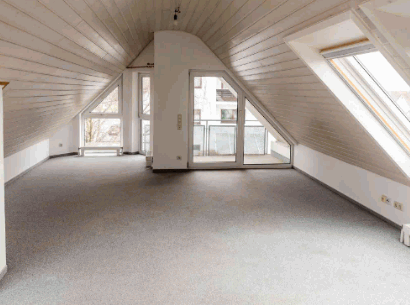
How Long Does A Shell Loft Conversion Take?
The timeline for a shell loft conversion can vary based on several factors, including the complexity of the project, the type of loft being converted, and the efficiency of project management. On average, the conversion process can take anywhere from 6 to 12 weeks, depending on the structural work required and the necessary compliance with building regulations. Homeowners should factor in these timelines when planning their conversions to ensure a smooth and efficient process from start to finish.
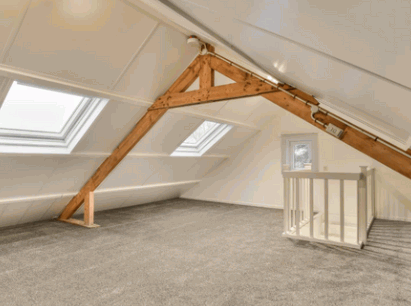
How To Save Money On A Shell Loft Conversion?
Saving money on a shell loft conversion is possible through a variety of strategies that can help homeowners reduce overall expenses while still achieving their renovation goals. One effective approach is to gather multiple quotes from reputable tradesmen and companies specializing in loft conversions, allowing for informed decisions based on cost and services offered. Additionally, considering DIY options for certain phases of the project can further enhance budget management, enabling homeowners to maintain control over costs without sacrificing quality.
Get Multiple Quotes
One of the most effective ways to save money on a shell loft conversion is to obtain multiple quotes from reputable companies that specialize in this type of work. By comparing estimates, homeowners can identify competitive pricing and choose the best value for their project. This process not only ensures that they receive a fair price but also allows them to evaluate the services and experience offered by different tradesmen.
When homeowners take the time to collect several proposals, they unlock several key advantages. Gathering multiple quotes enables a clearer understanding of the market rates, providing insights that can significantly affect the overall budgeting for the project. As a result, they can make informed decisions based on comparative prices and varying service levels.
- Enhanced Decision-Making: With diverse options at their disposal, homeowners are better equipped to choose contractors who align with their specific needs, leading to a more satisfactory outcome.
- Cost Management: This diligence in comparison helps in spotting hidden costs or additional services that may not initially be apparent.
- Quality Assurance: More quotes often mean exploring a wider range of credentials and customer feedback, ensuring a higher standard of workmanship.
In essence, this practice not only maximizes potential savings but also guarantees peace of mind for homeowners embarking on their loft conversion journey.
Choose A Reputable Company
Selecting a reputable company for a shell loft conversion is essential to ensuring quality work and minimizing potential issues during the project. Experienced tradesmen with verified qualifications can offer valuable insights into the project management process and help prevent unforeseen complications that could inflate costs. Homeowners should look for companies with a strong track record, positive customer reviews, and appropriate credentials to guarantee successful project execution.
The significance of choosing wisely cannot be overstated; after all, the success of such an undertaking hinges largely on the expertise of the individuals involved. When considering a shell loft conversion, it’s crucial to examine not only the qualifications of tradesmen but also their areas of specialisation.
- Check for industry certifications that signify a commitment to excellence.
- Review online feedback to gauge client satisfaction and professionalism.
- Ask for past project examples to better understand their workmanship.
These factors collectively enhance the likelihood of a successful outcome, ensuring that the loft is transformed into a valuable and functional space that meets the homeowner’s expectations.
Opt For A Basic Design
Opting for a basic design during a shell loft conversion can significantly reduce overall expenses, allowing homeowners to allocate their budget more effectively. Simplifying the design can reduce structural work and material costs while still achieving a functional and appealing space. Homeowners should focus on essential elements and consider postponing more elaborate interior finishes until a later date, which can lead to substantial savings.
By prioritizing a straightforward approach, individuals can avoid unnecessary complexities that often inflate costs.
- Basic structural frameworks typically require fewer resources and less labor, leading to a more economical build.
- Reducing the number of architectural features not only simplifies construction but also helps in speeding up the overall project timeline.
- Homeowners can later enhance their spaces with upgraded finishes, allowing for a staged approach to renovations without compromising on quality.
This way, decisions can be made more flexibly, enabling homeowners to enjoy their new loft while planning for future enhancements tailored to their evolving tastes and budget.
Consider DIY Options
Considering DIY options for certain aspects of a shell loft conversion can offer significant cost-saving opportunities for homeowners willing to invest their time and effort.
By taking on tasks such as painting, flooring, or even basic carpentry, homeowners can reduce labor costs while still achieving a high-quality finish. It’s crucial to balance DIY efforts with professional services, ensuring that critical structural work is handled by qualified tradesmen.
Incorporating DIY elements not only fosters a sense of ownership in the project but also allows individuals to personalize their space. It’s essential to weigh the potential challenges against the benefits; for instance, while painting is a straightforward project, electrical and plumbing tasks often require specialized knowledge.
Here are some specific DIY options:
- Painting walls and ceilings to create the desired atmosphere.
- Laying down laminate or engineered wood flooring for an appealing look.
- Constructing custom shelving to maximize storage.
Each task undertaken should be assessed for skill level and safety, ensuring that the overall outcome aligns with one’s vision while effectively managing the budget.
